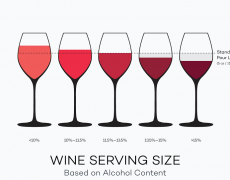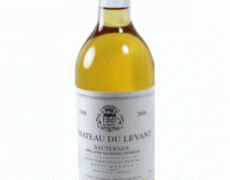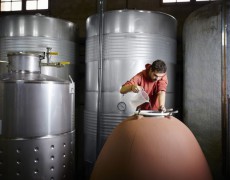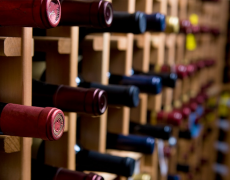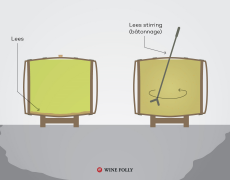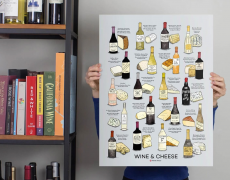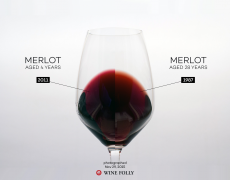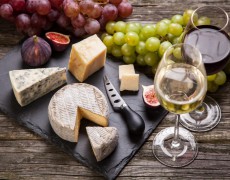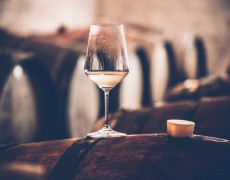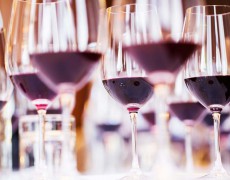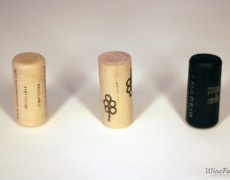Malbec is a favorite wine the world over. But progressive producers are experimenting with the grape in everything from gin to vermouth. We look at four unexpected ways Malbec grapes are being used in drinks.
BY SORREL MOSELEY-WILLIAMS

Malbec rows at Doffo Winery / Photo courtesy Doffo
Argentina’s most adaptable grape migrant, Malbec (original birth place: Cahors, France) is responsible for securing the country’s place on the global wine map. Transplanted to Mendoza by French agronomist Michel Aimé Pouget in 1852, this bold red effortlessly adapted to Andean terroir and captured drinkers’ hearts with its berry aromas, juicy flavors and smooth tannins. Malbec has adapted to Argentina’s diverse latitudes, from the northwest Jujuy Province down to Patagonia’s Río Negro and Neuquén provinces in the south.
But there’s more to Malbec beyond the wines you’re familiar with. As Malbec World Day grips the globe, with tastings, pop-ups, and an array of events lined up every year on April 17, we take a look at four new ways to drink Malbec—from a vermouth to gin—that showcase just how versatile this humble grape from Southwest France can truly be.
 Left to right: Walter Hilbing with his father Rolando Hilbing in front of one of their stills / Photo by Horacio Altamirano
Left to right: Walter Hilbing with his father Rolando Hilbing in front of one of their stills / Photo by Horacio Altamirano
Malbec gin
Rolando Hilbing, Argentina’s first Master Distiller, picked up a bronze medal for his eponymous London Dry gin at Austria’s Destillata 2018 distilling contest—a gin that has Malbec raisins at its core.
After studying enology at Germany’s Geisenheim University in the 1970s, Hilbing returned home to Argentina to work in the wine industry. In 2000, the opportunity to start his own boutique spirits company arose, and Hilbing Franke Family Distillery was born. Basing spirits on Malbec was an obvious choice, as the red grape practically courses through Hilbing’s veins.
“My family has been intimately involved in developing Malbec in Mendoza,” says Hilbing. “My great-grandfather, Pablo Loos, co-founded the province’s famous quinta agrónomica (agronomy farm) along with Michel Pouget, while my grandfather planted the first 400-hectare vineyard dedicated to Malbec in La Consulta, Uco Valley, back in 1930. Those links are very important.”
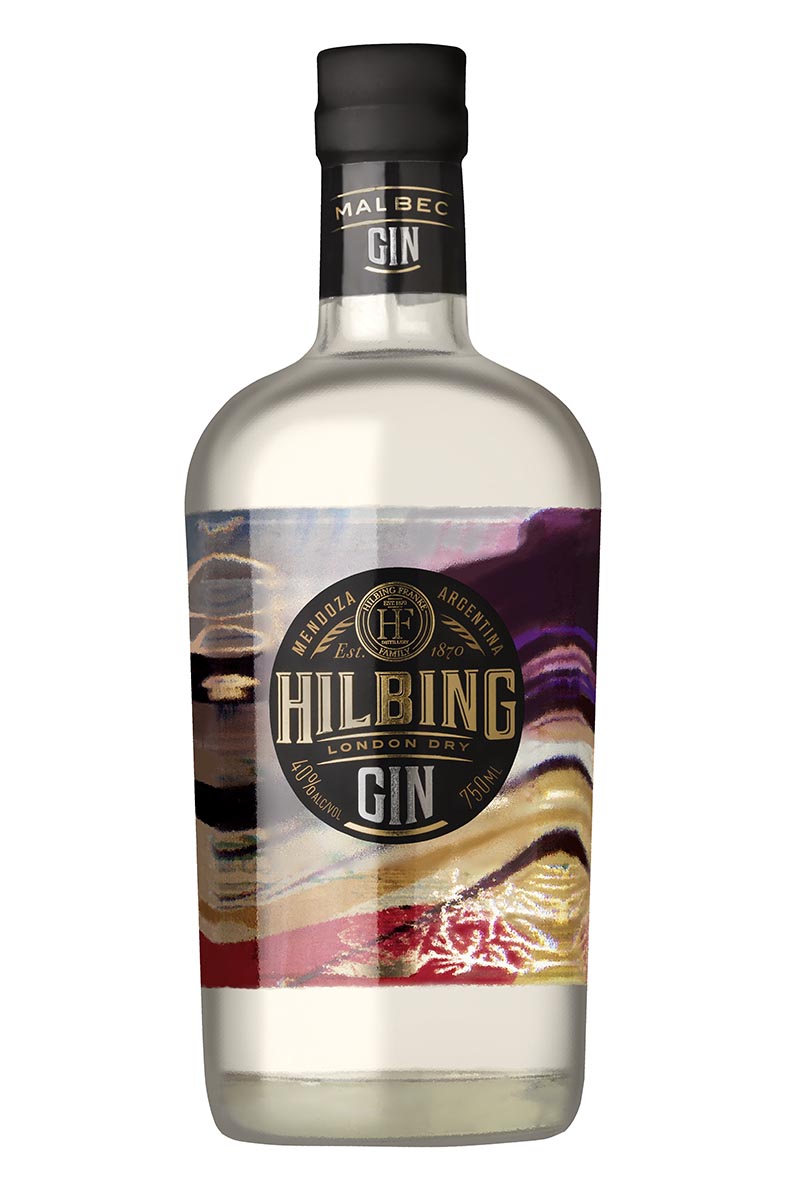 Hilbing London Dry Gin
Hilbing London Dry Gin
Hilbing Malbec London Dry draws from wild rose petals and linden blossoms, but incorporating Malbec raisins into the rest of the gin’s botanicals has been the key to its success. It isn’t currently exported to the U.S. but retails for around $20 in Argentina, where its popularity is growing.
According to Hilbing, “Malbec is Argentina’s insignia grape and it gives a particular softness to our gin compared with others.”
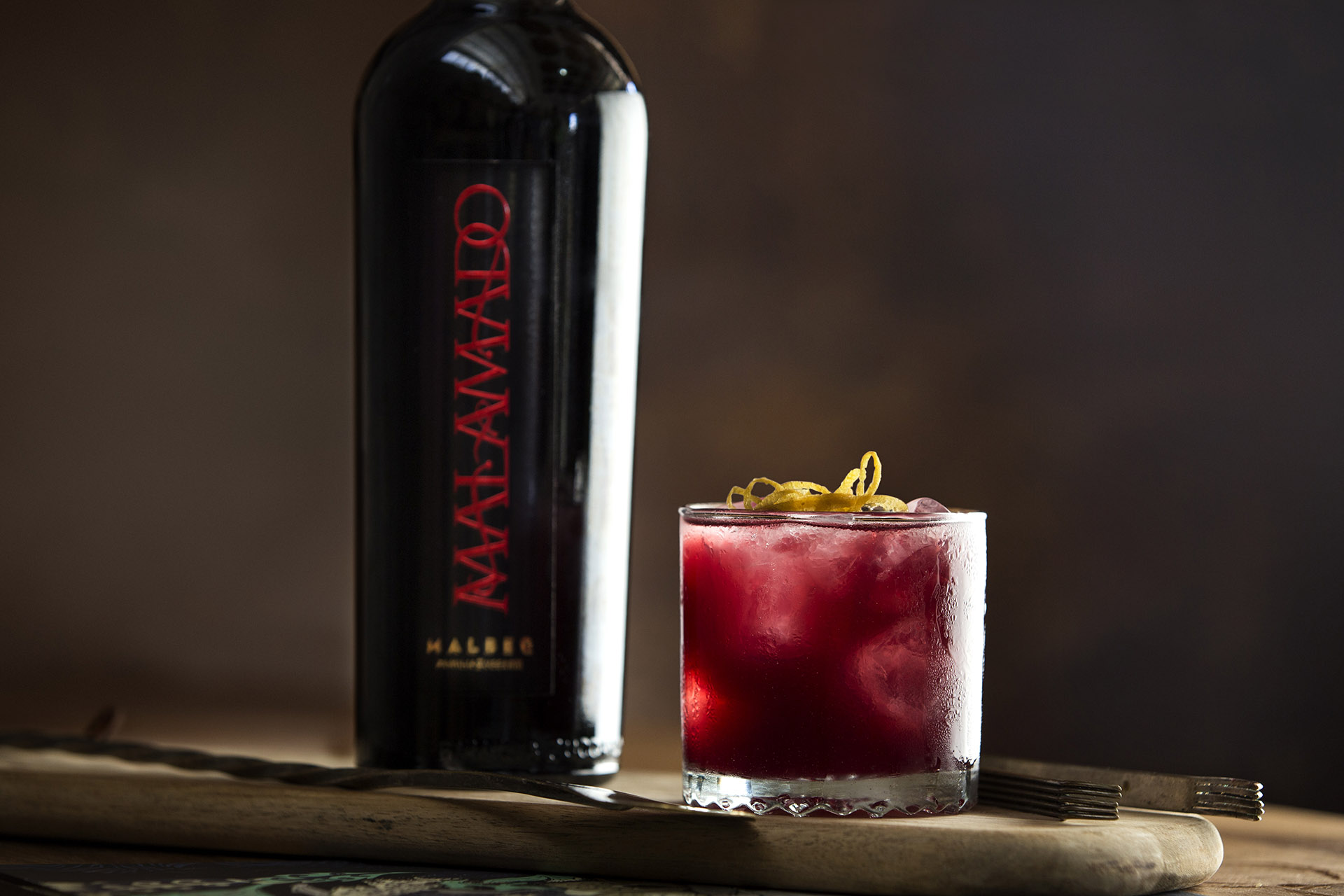 Malamado Port-style Malbec fortified wine / Photo courtesy Malamado
Malamado Port-style Malbec fortified wine / Photo courtesy Malamado
Malbec Port
Back in the 1990s, Familia Zuccardi sent a team of oenologists to seek inspiration from Portugal’s Douro Valley. The group returned to Mendoza stirred to create a fortified wine that would display pure Argentine character.
Selecting the 2000 Malbec vintage, Malamado became the country’s first Port-style wine.
“We chose Malbec because we wanted to represent a distinctly Argentine fortified wine, and there’s no better variety than this one as the vehicle to obtain such expression,” says Sebastián Fernández, the enologist currently behind Malamado’s production. “It’s so emblematic and representative of our country, and it’s the best at adapting to our climate and soil.”
The wine is made exclusively from Malbec that’s fermented for 10 days to reach 120 grams of residual sugar and 18% alcohol by volume, then aged for two years in French oak barrels. With ruby-red hues, Malamado offers up scents of quince, nut and sweet spice on the nose, while the palate presents dried dark-fruit characteristics. Available across the U.S., this unique take on Port is worth giving a try given its affordable $19 price tag.
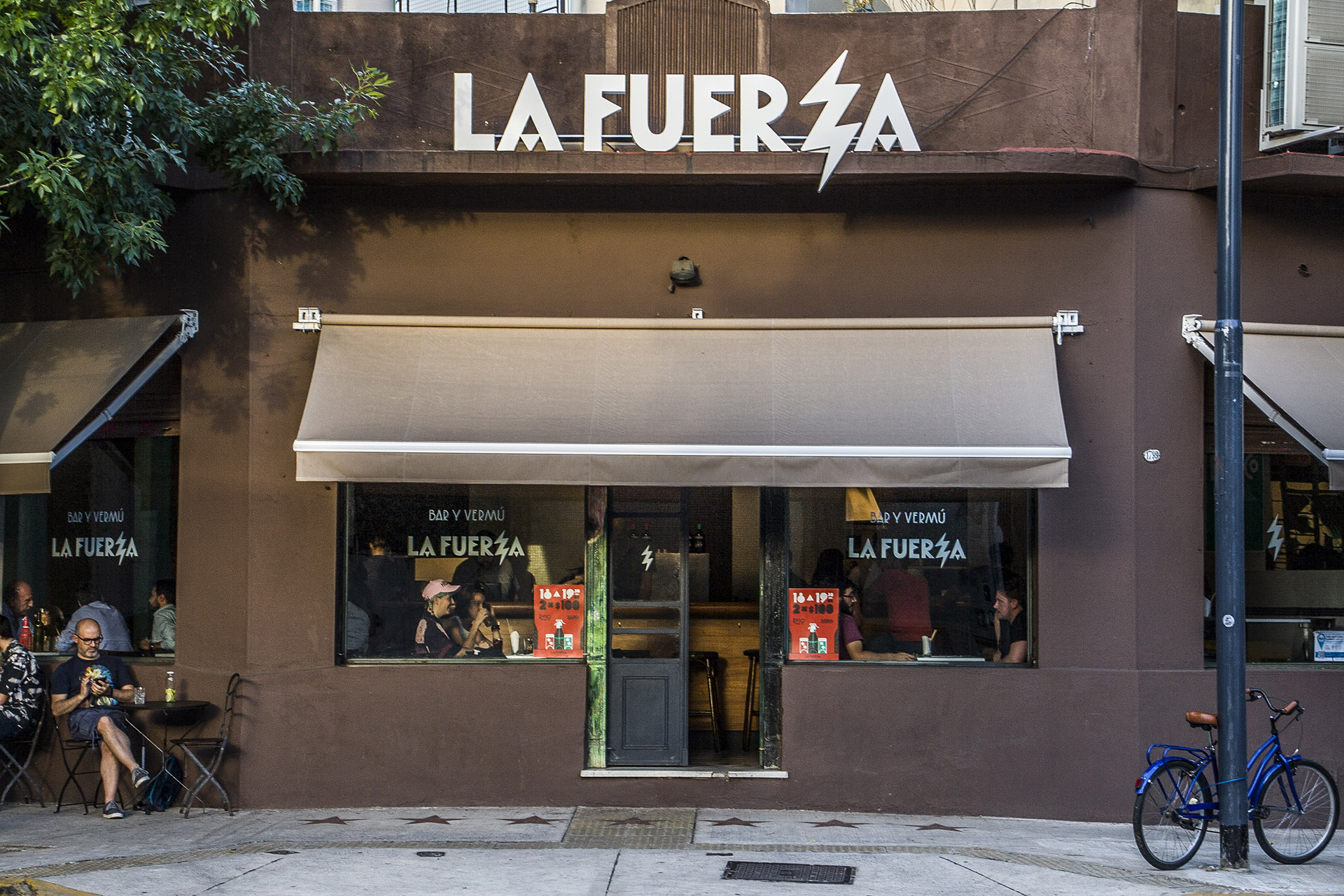
La Fuerza vermouth bar in Buenos Aires, Argentina / Photo by Santiago Ciuffo
Malbec vermouth
Tapping into Argentina’s thirst for aperitifs and wine, a restaurateur, a journalist, an agronomist and a marketing consultant joined forces to design a Malbec-based vermouth that truly reflects its origin. While it’s taken two years for La Fuerza to come to fruition, the upshot is a native vermú (as vermouth is called in Argentina) and tapas bar of the same name selling vermouth on tap and by the bottle in Buenos Aires.
La Fuerza Roja (The Red Force) resolutely has its origins in Mendoza. Grapes come from Uco Valley and comprise 75% of the vermouth. Its botanicals—including lemon verbena, orange and lemon peel, angelica, sage and elderberry—are sourced from around the province.
 Malbec and Torrontés vermouth on tap at La Fuerzo / Photo by Santiago Ciuffo
Malbec and Torrontés vermouth on tap at La Fuerzo / Photo by Santiago Ciuffo
One member of the quartet behind the project, writer Martín Auzmendi, says creating a localized vermú has been a fascinating process for him and his friends, since their love of eating and drinking has culminated in both a beverage and a bar. “It’s been exciting to work with two key aspects in creating a local drink—herbs, seeds and peels—and the wine. We wanted to ensure Malbec’s typicity was noted in the glass, while also appealing to wine drinkers.”
Besides the red expression, La Fuerza also comes in a white version based on Argentina’s native Torrontés grape.
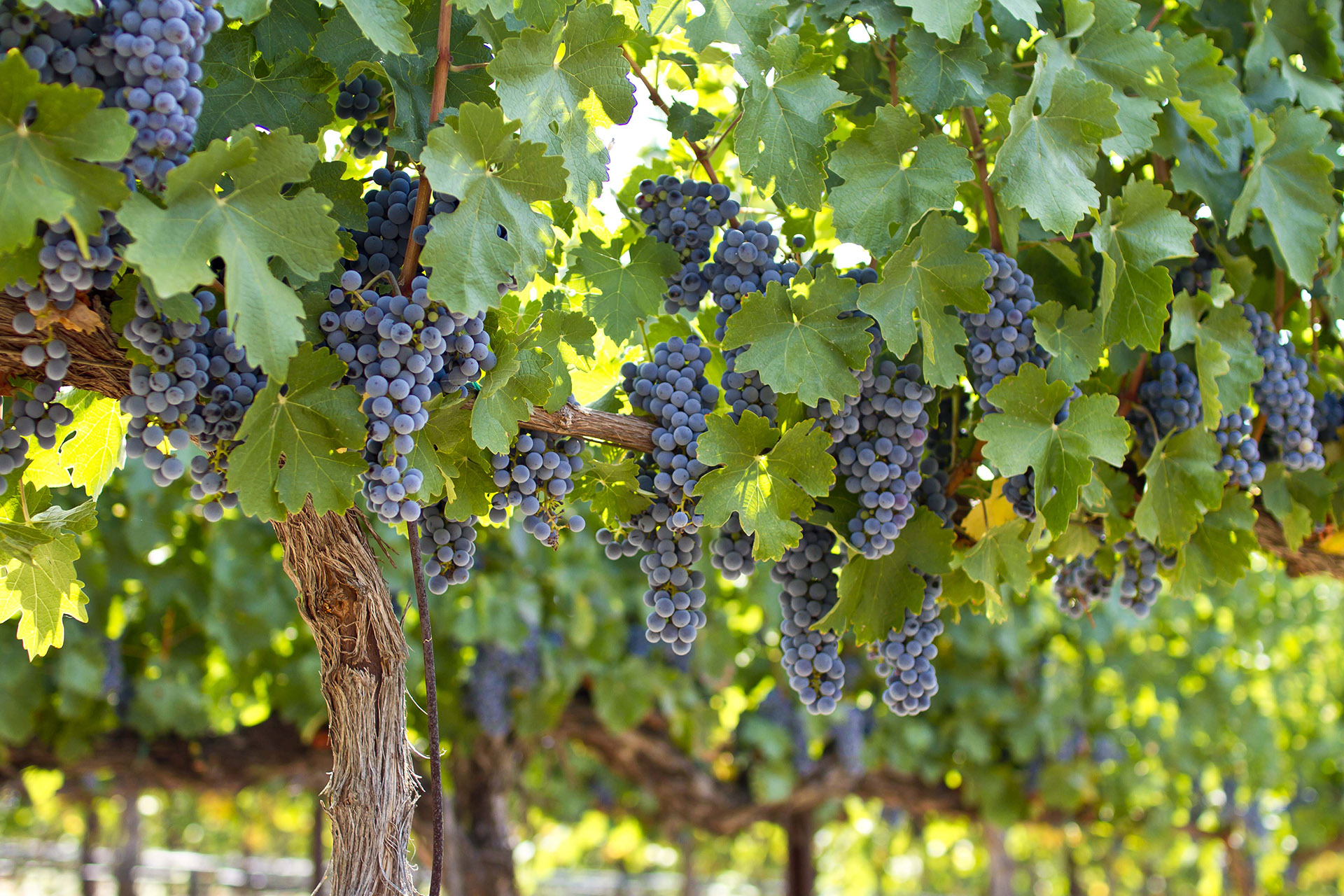 Malbec on the vine at Doffo, in California’s Temecula Valley / Photo courtesy Doffo
Malbec on the vine at Doffo, in California’s Temecula Valley / Photo courtesy Doffo
Malbec grappa
Southern California’s Temecula Valley is an unlikely destination for small-lot Malbec grappa production. There also happens to be an Argentine connection. Raised in the pampas (flatlands) south of Buenos Aires, Marcelo Doffo migrated to the U.S. in 1975. But it wasn’t until a visit to Turin, Italy, in 1994 where he discovered that his great-uncle made both wine and grappa, that he turned his hand to oenology.
“Given that we’re the only Argentine family in the valley, it was a no-brainer for us to plant Malbec,” says Damian Doffo, assistant winemaker at Doffo Wines. “We have four different blocks and produce a reserve as well as Lucca, a Port[-style wine] inspired by Malamado. My dad started making wine in 1994 in Orange County after he came back from Italy, and as a kid I remember helping him to make grappa. Once the winery was established, we started rounding off high-end juice from French clones to distill off that, rather than using leftovers.”
 Doffo’s Grappa Malbec Brandy / Photo courtesy Doffo Winery
Doffo’s Grappa Malbec Brandy / Photo courtesy Doffo Winery
The current Doffo Grappa Malbec Brandy release (comprising just 80 cases) comes from the 2015 vintage, same as the family’s still wine, and retails for $49. According to Damian, “It’s got a clean aromatic profile. On the palate, it has a little skin tannin, slight Malbec grapes flavor and a little nuttiness, then slight drying tannin. Its biggest characteristic is smoothness. Even though it’s 80 proof, it’s approachable.”
Source: winemag.com

